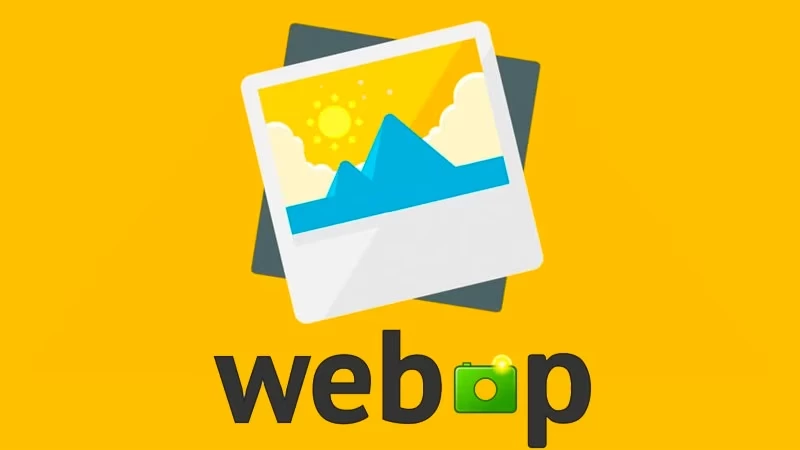Why WebP is Better Than Other Image Formats?
A majority of internet users are now on a slow internet connection. And a majority of these internet users are on a mobile device. And this number of mobile users is only increasing in the coming years. So, even if the connection speed is high, you need to optimize web images for mobile devices. And WebP is a great image format to do just that. WebP is a modern image format that provides excellent lossless and lossy image compression on the web. It has a lot of advantages over existing image formats and provides a great improvement in perceptual image quality.

What is WebP?
WebP is an image format created by Google. WebP is a modern image format that provides excellent lossless and lossy image compression on the web. With WebP, webmasters and web developers can create smaller, richer images that make the web faster.
Lossless WebP images are 26% smaller compared to PNG images. Lossy WebP images are 25-34% smaller than comparable JPEG images at an equivalent SSIM quality index.
Lossless WebP supports transparency (also known as alpha channel) at the cost of only 22% more bytes. For cases where lossy RGB compression is acceptable, lossy WebP also supports transparency, typically providing 3x smaller file sizes compared to PNG.
How WebP works
WebP lossy compression uses predictive coding to encode the image, the same method used by the VP8 video codec to compress keyframes in videos. Predictive coding uses the values in adjacent blocks of pixels to predict the values in the block and then encodes only the difference.
WebP lossless compression uses previously seen image fragments to accurately reconstruct new pixels. It can also use the local palette if no interesting match is found.
Why should you use WebP?
WebP is a new image format that provides lossless and lossy compression for images on the web. In general, WebP tends to compress about 30% more than JPEG, and about 25% more than PNG. WebP typically achieves an average of about 25% size reduction in files compared to PNGs and JPEGs. The WebP site has a lot of information about the format and tools to help you use it. There are even tools that can convert your existing images to WebP format. The only issue with WebP is that it is not supported by some older browsers such as Internet Explorer 9 etc.
WebP is a lossy and lossless compression method that can be applied to a large number of photographic, translucent, and graphic images found on the web. The degree of lossy compression is adjustable, so the user can choose a compromise between file size and image quality. WebP typically achieves an average of 30% more compression than JPEG and JPEG 2000 without losing image quality. The WebP format focuses on creating smaller, better-looking images that can help speed up the web.
How To Convert any images to WebP format?
To convert any images like JPG, PNG, or GIF to WebP you can use TinyTool Image converter. Which is a free image converter tool that can easily convert any format images to these formats WEBP, JPG, PNG, GIF, or BMP.
Some natively supported WebP browsers
WebP lossy support
- Google Chrome (desktop) 17+
- Google Chrome for Android version 25+
- Microsoft Edge 18+
- Firefox 65+
- Opera 11.10+
- Native web browser, Android 4.0+ (ICS)
WebP lossy, lossless & alpha support
- Google Chrome (desktop) 23+
- Google Chrome for Android version 25+
- Microsoft Edge 18+
- Firefox 65+
- Opera 12.10+
- Native web browser, Android 4.2+ (JB-MR1)
- Pale Moon 26+
WebP Animation support
- Google Chrome (desktop and Android) 32+
- Microsoft Edge 18+
- Firefox 65+
- Opera 19+
What are the differences between PNG, JPG, and WebP?
WebP for the web WebP is a modern image format that provides excellent lossless and lossy image compression. It was developed by Google and has been available since 2010. Here are some of WebP's key features: Smaller file sizes: WebP typically compresses images to 25-34% of their original size, compared to JPEG's 10-20%, while maintaining visual quality.
It is based on the VP8 video codec and uses lossy compression. It features a lossless mode that offers the same quality as PNG and a lossy mode that offers superior compression to both PNG and JPG. WebP lossy supports transparency and animation, while lossless is supported only by the lossless mode. WebP is also supported by Google Chrome, Microsoft Edge, Opera, Yandex, and a number of other browsers.
Conclusion
Today we're seeing a lot of new image formats introduced in the market. They are all trying to solve the problem of big images taking up too much bandwidth and taking too long to load on mobile. While this is a very important problem, we at Pixelz have decided to stick with the well-established JPEG format for now. It's supported by every browser and its lossy format is perfect for photos. In addition, we're currently keeping our focus on photos instead of videos. We're also aware of the fact that new image formats like WebP offer lossless compression. However, we believe that lossless compression is not needed for photos, because they are already perfect as they are. We do believe that lossless images can have a place in the market if they are used for high-resolution images, like those taken by a DSLR camera.
Thank you for reading this article if you like our website then don't forget to share it with your friend and family. Have a nice day.